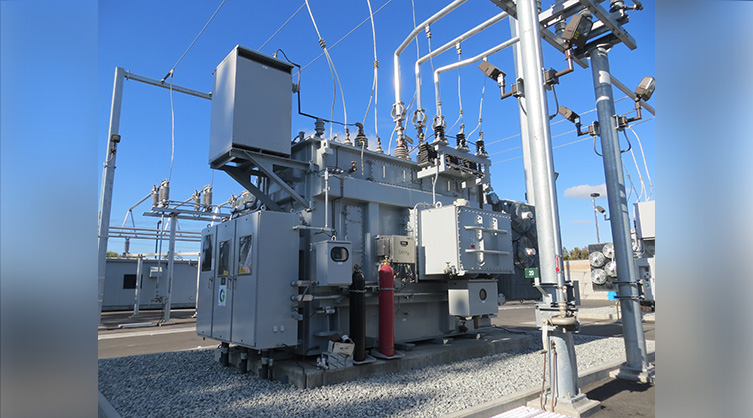The instrument transformer demand to double with modern grid infrastructure
By EPR Magazine Editorial May 10, 2023 12:56 pm IST
By EPR Magazine Editorial May 10, 2023 12:56 pm IST

The increasing demand for revamping conventional grid infrastructure and ongoing transmission and distribution grid network expansion is also expected to propel the demand for instrument transformers in India.
The Indian instrument transformer market by 2026 is expected to see a CAGR exceeding 3.5 percent. However, the COVID-19 pandemic has caused significant supply chain disruptions in the country, particularly in 2020, due to lockdowns and restrictions affecting the power sector and renewable energy businesses. Despite these challenges, the market is expected to benefit from expanding and upgrading existing power and distribution infrastructure and modernising measuring and monitoring equipment. However, the inability of instrument transformers to function in AC systems may hinder the market’s growth during the forecast period.
Moreover, factors such as expanding and upgrading existing power and distribution infrastructure, modernising measuring and monitoring equipment, and integrating advanced technologies such as AI and IoT are expected to create significant opportunities for the industry. In addition, the demand for instrument transformers will likely be propelled by the expanding grid infrastructure, driven by increasing demand for electricity, voltage fluctuations, and unstable power grids. As a result, companies in the industry are investing in R&D and collaborations to develop eco-friendly and sustainable solutions to meet the growing demand for instrument transformers in India.
During the forecast period, the current transformer type is expected to experience substantial growth due to its advantages, such as easy maintenance, installation, and safe measurement. Furthermore, the integration of advanced technologies, such as artificial intelligence (AI) and the Internet of Things (IoT), along with ongoing research and development (R&D), is expected to create significant opportunities in the coming years. Additionally, expanding grid infrastructure is expected to drive demand for instrument transformers and propel the market in India during the forecast period.
The basic principle of current transformers is that when an AC flows through the primary winding, alternating magnetic flux is produced, which induces a proportional alternating current in the secondary winding. One significant operational difference between current and potential transformers is that they typically have only one or a few turns in their primary winding, which could be a heavy-duty wire around the core, a bar, or a conductor placed through a hole. In contrast, the secondary winding has many turns wound on the low-loss magnetic material of the laminated core.
Current transformers have a wide range of applications, including extending the range of measuring instruments, such as energy metres, wattmeters, KVA metres, and ammeters, and providing overcurrent fault protection and differential circulating current protection systems.

The advantages of current transformers include measuring high currents, high electrical isolation, effective measurements, easy maintenance and installation, and safe AC measurement. These advantages increase the demand for current transformers compared to potential transformers.
According to a market report by Mordointelligence, “based on the factors mentioned above, the current transformer type is expected to experience significant growth in the Indian instrument transformer market by 2026”.
Expansion of grid infrastructure to boost the demandThe stable operation of the electrical grid is necessary to meet the rising electricity demand, and any faults in the power grid can lead to extensive financial losses and catastrophic damage to the electrical infrastructure. However, instrument transformers can avoid such situations by ensuring safe and cost-effective automation of control systems. With the coupling of instrument transformers with general electrical measuring devices, the measurement of large electrical quantities becomes possible.
Growth trends
In developing countries like India, the demand for revamping the conventional grid infrastructure in conjunction with ongoing transmission and distribution grid network expansion is increasing. The regional transformer industry is experiencing remarkable growth due to favourable regulatory measures in compliance with grid stability and energy efficiency. The National Electricity Policy (NEP, 2021) aims to ensure grid stability across all transmission stations or substations, which includes high-voltage equipment like instrument transformers and switchgear.
Furthermore, the growth in interest in rural electrification is in line with the renovation of the existing grid network, allowing authorities to incorporate an efficient protection and monitoring mechanism. Hence, the increase in grid complexities across the electric infrastructure, in conjunction with emerging peak electricity demand from end-users, is driving the growth of the Indian instrument transformer market.
Based on the abovementioned factors, expanding grid infrastructure is expected to propel the demand for instrument transformers in India, driving the market during the forecast period.
India’s instrument transformer industry overview
The Indian instrument transformer market is comprised of several players, including Siemens Energy AG, General Electric Company, Schneider Electric SE, ABB Ltd., and Hitachi Energy India Limited. In April 2021, GE Renewable Energy’s Grid Solutions and Hitachi Energy India Limited signed a landmark agreement to use an eco-friendly alternative gas to sulphur hexafluoride (SF6) in high-voltage equipment, such as instrument transformers and switchgear. This gas mixture is based on fluoro nitrile and has a significantly reduced environmental impact compared to SF6. The agreement also involves sharing complementary intellectual property related to their respective SF6-free solutions. It is expected to accelerate the use of fluoro nitrile-based ecoefficient insulation and switching gas as an alternative to SF6 in high-voltage equipment.
Furthermore, in September 2020, Power Grid Corporation of India Limited collaborated with Bharat Heavy Electricals Limited (BHEL) to successfully commission India’s first natively developed 400 kV optical current transformer and digital substation components at the 400/220 kV Bhiwadi substation of Powergrid. This research and development project was a significant step towards the complete digitisation of the substation automation system and its localisation.
We use cookies to personalize your experience. By continuing to visit this website you agree to our Terms & Conditions, Privacy Policy and Cookie Policy.